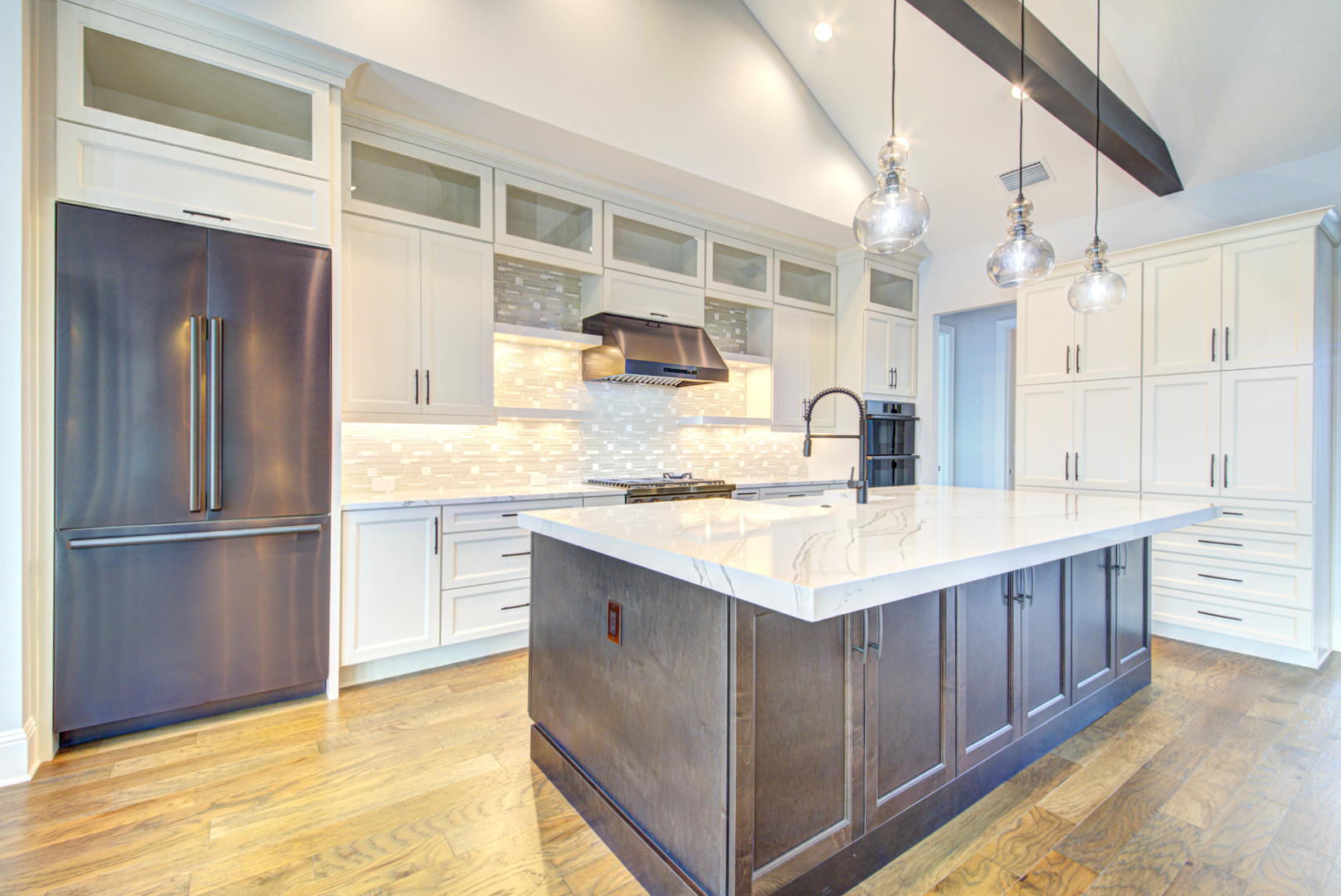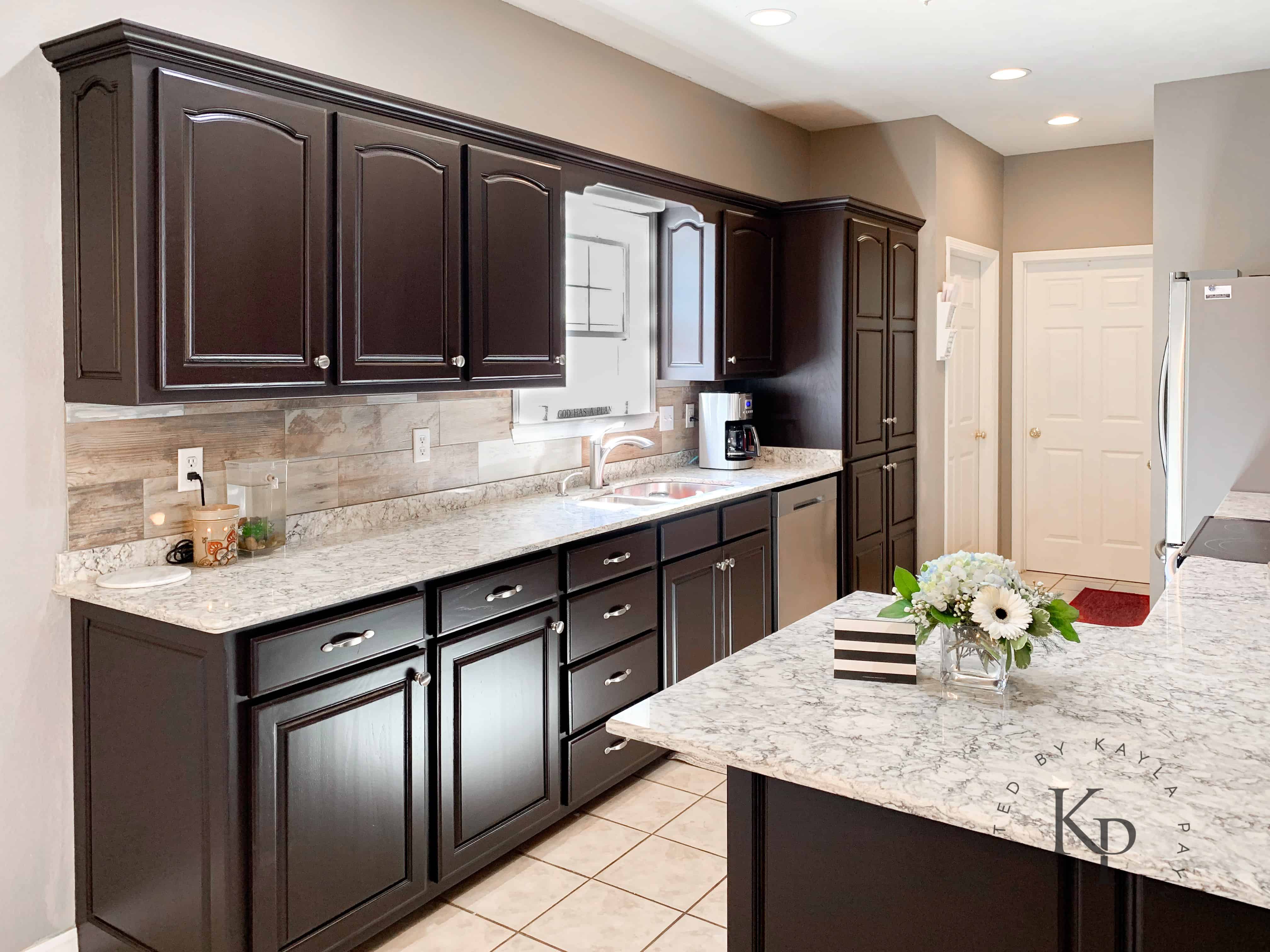Bathroom Cabinet Styles and Materials: Bathroom Cabinet And Countertop Ideas

Choosing the right bathroom cabinet can significantly enhance both the functionality and aesthetics of your bathroom. With a wide array of styles and materials available, the possibilities are endless. Let’s delve into the world of bathroom cabinets, exploring different styles, materials, and design considerations.
Bathroom Cabinet Styles
The style of your bathroom cabinet should complement the overall design theme of your bathroom. Here are some popular bathroom cabinet styles:
- Traditional: Characterized by intricate details, ornate hardware, and classic designs. These cabinets often feature wood finishes like cherry, mahogany, or oak, with raised panels and decorative moldings. Examples include cabinets with claw foot designs, fluted columns, and beveled edges.
- Modern: Modern bathroom cabinets prioritize clean lines, minimalist designs, and sleek finishes. They often feature materials like stainless steel, glass, or high-gloss laminates. Examples include cabinets with geometric shapes, recessed handles, and open shelving.
- Contemporary: Contemporary bathroom cabinets blend modern elements with a touch of traditional style. They typically feature a mix of materials like wood and metal, with a focus on functionality and clean lines. Examples include cabinets with a combination of open and closed storage, floating shelves, and integrated lighting.
Bathroom Cabinet Materials
The material of your bathroom cabinet plays a crucial role in its durability, maintenance, and overall aesthetic appeal. Here are some common bathroom cabinet materials and their pros and cons:
- Wood: Wood is a classic and versatile material for bathroom cabinets. It offers a natural warmth and elegance, and can be stained or painted to match any décor. However, wood is susceptible to moisture damage and requires regular maintenance. Examples include oak, maple, cherry, and walnut.
- Metal: Metal bathroom cabinets are known for their durability, moisture resistance, and sleek modern look. They are often made of stainless steel, aluminum, or chrome. However, metal can be prone to scratches and dents, and may require special cleaning agents. Examples include cabinets with brushed steel finishes, geometric designs, and open shelving.
- Glass: Glass bathroom cabinets offer a contemporary and airy feel. They are often used for vanity tops or open shelving, allowing for a visual display of items. However, glass can be fragile and prone to scratches, requiring careful handling and cleaning. Examples include cabinets with frosted glass panels, mirrored doors, and clear glass shelves.
- Laminate: Laminate is a durable and affordable option for bathroom cabinets. It is available in a wide range of colors and patterns, mimicking the look of wood or stone. However, laminate can be susceptible to water damage if not properly sealed. Examples include cabinets with high-gloss finishes, woodgrain patterns, or solid colors.
Designing a Unique Bathroom Cabinet
To create a truly unique bathroom cabinet, consider blending different materials and styles. For instance, a cabinet with a wooden frame, glass doors, and metal hardware would offer a blend of traditional warmth, modern elegance, and industrial flair.
A well-designed bathroom cabinet should be both functional and aesthetically pleasing, seamlessly integrating into the overall bathroom design.
Countertop Options for Bathrooms

Choosing the right countertop material for your bathroom is crucial, as it impacts both the aesthetics and functionality of the space. From sleek and modern to classic and elegant, a wide array of countertop materials are available, each with its own unique set of advantages and disadvantages. Understanding these characteristics will help you make an informed decision that aligns with your design preferences, budget, and lifestyle.
Popular Countertop Materials for Bathrooms
This section explores the key features of popular countertop materials commonly used in bathrooms, providing a comprehensive overview of their properties, benefits, and drawbacks.
- Granite: Known for its durability, scratch resistance, and heat resistance, granite is a natural stone that adds a touch of elegance to any bathroom. Its unique veining patterns and color variations offer a wide range of design possibilities. Granite is relatively expensive, but its longevity and low maintenance requirements make it a worthwhile investment.
- Marble: Renowned for its luxurious appeal and timeless beauty, marble is another natural stone option that brings sophistication to bathrooms. Its smooth, polished surface adds a touch of grandeur, while its intricate veining patterns create a unique visual interest. However, marble is porous and susceptible to staining, requiring regular sealing and careful maintenance.
- Quartz: Engineered quartz is a popular choice for bathroom countertops due to its durability, stain resistance, and low maintenance requirements. It is a non-porous material, making it resistant to bacteria and mold growth. Quartz comes in a wide variety of colors and patterns, offering flexibility in design. Its affordability compared to natural stone options makes it a practical choice for many homeowners.
- Laminate: Laminate countertops are a budget-friendly option that offers a wide range of styles and colors. They are easy to maintain and resistant to scratches and heat. However, laminate is not as durable as natural stone or engineered quartz, and it may not be as aesthetically appealing. Laminate is a good option for those seeking a practical and affordable solution.
Comparing Countertop Materials
This table provides a side-by-side comparison of popular countertop materials, highlighting their key characteristics:
| Material | Cost | Durability | Maintenance | Aesthetic Appeal |
|---|---|---|---|---|
| Granite | High | High | Low | High |
| Marble | High | Moderate | High | High |
| Quartz | Moderate | High | Low | Moderate |
| Laminate | Low | Low | Low | Moderate |
Unique Properties of Countertop Materials
Each countertop material possesses unique properties that influence its suitability for bathroom applications. Understanding these properties can help you select the material that best meets your needs and preferences.
- Stain Resistance: Granite and quartz are highly resistant to stains due to their non-porous nature. Marble, on the other hand, is porous and susceptible to staining, requiring regular sealing to protect its surface. Laminate countertops are generally resistant to stains but may be prone to discoloration over time.
- Scratch Resistance: Granite and quartz are highly resistant to scratches, making them suitable for high-traffic areas like bathrooms. Marble is more susceptible to scratches, while laminate countertops are prone to scratches and dents.
- Heat Resistance: Granite and quartz are heat-resistant materials, making them suitable for placing hot items on their surface. Marble is susceptible to heat damage, while laminate countertops are generally heat-resistant but may show signs of wear over time.
Designing a Bathroom Countertop with Quartz
Quartz countertops offer a balance of durability, affordability, and aesthetic appeal, making them a popular choice for modern bathrooms. Let’s consider a bathroom countertop design using quartz:
- Advantages: Quartz countertops are non-porous, making them resistant to bacteria and mold growth, ideal for a hygienic bathroom environment. Their durability and scratch resistance ensure they withstand daily wear and tear, while their wide range of colors and patterns allow for customization to match any design style. Quartz countertops are also relatively easy to maintain, requiring only regular cleaning with mild soap and water.
- Disadvantages: While quartz is a durable material, it can be susceptible to chipping or cracking under extreme impact. Its engineered nature may not appeal to those seeking the natural beauty of stone. The cost of quartz countertops can vary depending on the specific color and pattern chosen.
Bathroom Cabinet and Countertop Design Ideas

Bathroom cabinet and countertop ideas – Blending functionality with aesthetics is key to creating a bathroom that’s both practical and pleasing to the eye. Bathroom cabinets and countertops play a crucial role in this equation, offering storage solutions while defining the overall design aesthetic. This section delves into design ideas that optimize both form and function in your bathroom.
Maximizing Storage and Functionality
Smartly designed bathroom cabinets and countertops can transform a cluttered space into a haven of organization. Here are some configurations that maximize storage and functionality:
- Floating Vanities: These contemporary vanities offer a sleek, minimalist look while maximizing floor space. Floating vanities can be paired with open shelving or drawers, providing ample storage for toiletries, towels, and other essentials.
- Corner Cabinets: Utilize often-overlooked corner space with corner cabinets that offer a surprising amount of storage. These cabinets can be fitted with shelves, drawers, or a combination of both, making the most of every inch.
- Medicine Cabinets: Beyond basic storage, medicine cabinets offer a space-saving solution for storing medications, toiletries, and other items that you need to keep out of sight.
- Towel Bars and Racks: Strategically placed towel bars and racks add functionality and visual appeal. Consider using towel bars with integrated shelves for added storage.
Incorporating Lighting and Accessories
Lighting and accessories play a vital role in creating the desired ambiance and enhancing the overall design of your bathroom.
- Under-Cabinet Lighting: This practical lighting solution illuminates the countertop area, making it easier to apply makeup or perform other tasks. Under-cabinet lighting also adds a touch of sophistication to the space.
- Mirror Lighting: Well-placed mirror lighting can brighten the entire bathroom, while also providing flattering light for grooming.
- Decorative Hardware: Handles, knobs, and other hardware can add a touch of personality and style to your bathroom cabinets and countertops. Choose hardware that complements the overall design aesthetic.
- Storage Baskets and Bins: These can help organize and conceal items within your cabinets, creating a clean and clutter-free look.
Creating a Cohesive Design, Bathroom cabinet and countertop ideas
To achieve a cohesive and visually appealing bathroom, consider these design tips:
- Color Palette: Choose a color palette for your bathroom that complements your existing decor and creates the desired ambiance. Neutral colors like white, gray, and beige can create a calming and spacious feel, while bolder colors can add a touch of personality.
- Material Choices: Select cabinet and countertop materials that complement each other and create a unified look. Consider the durability, maintenance requirements, and overall aesthetic of each material.
- Cabinet Style: Choose cabinet styles that align with the overall design aesthetic of your bathroom. Traditional styles, like shaker cabinets, offer a timeless look, while contemporary styles, like flat-panel cabinets, create a minimalist and modern feel.
- Countertop Edge Profiles: The edge profile of your countertop can add a subtle but impactful detail to your bathroom. Options include eased edges, bevel edges, and ogee edges, each offering a distinct look.
When it comes to bathroom cabinet and countertop ideas, the possibilities are endless. You can go for a sleek and modern look with dark wood cabinets and a dramatic countertop, or create a warm and inviting space with light wood and a natural stone countertop.
If you’re looking for a timeless and elegant combination, you might consider maple cabinets with white quartz countertops , which offer a clean and classic aesthetic that can be easily incorporated into any bathroom design. Whether you prefer a minimalist approach or a more traditional style, there’s a bathroom cabinet and countertop combination that’s perfect for you.
When designing a bathroom, the right cabinet and countertop can truly elevate the space. But just as important is the overall ambiance, and that’s where lighting comes in. If you’re looking for a touch of elegance in your bedroom, consider a bedroom wall lamp with a swing arm.
The same principle applies to your bathroom, where a well-placed light fixture can make all the difference in how your space feels. From sleek modern designs to classic farmhouse styles, there’s a cabinet and countertop combo out there that will perfectly complement your lighting choices.